 Libri di Philip Steele su Unilibro.it
)
Libri di Philip Steele su Unilibro.it
)
|
|
2005 |
 Title :
Galileo
Title :
GalileoAuthor: Steele Philip Publisher: Natl Geographic Soc Childrens books € 17,60
|
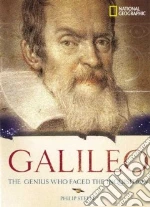 Title :
Galileo
Title :
GalileoAuthor: Steele Philip Publisher: Natl Geographic Soc Childrens books Galileo made the first effective use of the refracting telescope to discover important new facts about astronomy. He also discovered the law of falling bodies as well as the law of the pendulum. Galileo designed a variety of scientific instruments. He also developed and improved the refracting telescope, though he did not invent it. Galileo was born in Pisa in 1564. His father was determined that his son should be a doctor. But Galileo was never really interested in medicine-he discovered he had a talent for mathematics. In 1589 a position as a professor of mathematics required Galileo to teach courses in astronomy. Preparing for these courses deepened Galileo's understanding of astronomical theory. He became convinced of the truth of the theory, proposed by the Polish astronomer Copernicus, that all planets, including the earth, revolve around the sun.This was contrary to Ptolomy's well-established scientific model which seemed to prove that earth was the center of the universe. After building his first telescope in 1609, Galileo discovered that the moon was not smooth, but mountainous and pitted, much like earth. He also discovered four moons circling Jupiter. He made observations of sunspots, and of Venus. Galileo also pursued research on motion-working to develop a theory of motion consistent with a moving earth. In 1616, Galileo was summoned to Rome, charged by the church with heresy because of his adherence to Copernican theory. Church doctrine held that earth was the center of the universe. Although cleared of the charges, he was admonished not to treat Copernicus's theory as if it were true. Nevertheless, Galileo continued to publish works demonstrating that the Copernican system was logically superior to earlier theories. He was summoned to Rome again in 1633. This time he was found guilty, forced to retract his findings, and sentenced to life imprisonment. Because of Galileo's advanced age and poor health, he was allowed to serve out his sentence under house arrest in relative isolation at a villa outside Florence. He died there in 1642. Some 350 years later, in 1992, Pope John Paul II declared that the church had made a mistake in condemning Galileo. Galileo's genius lay in the way he approached scientific problems. First, he reduced those problems to very simple terms on the basis of everyday experience and common-sense logic. Then he analyzed and resolved the problems according to simple mathematical descriptions, thus opening the way for the development of modern mathematical physics. € 29,30
|
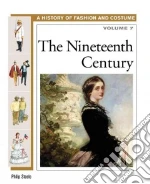 Title :
The Nineteenth Century
Title :
The Nineteenth CenturyAuthor: Steele Philip Publisher: Facts on File The Nineteenth Century provides a concise account of the wide variety of costume and fashion created during this period. Spanning the backwoodsmen of Tennessee to the Southern Belles of the Deep South, this volume covers a broad spectrum of material. Chapters profile new frontiers in the Americas, 19th-century Canada, the first peoples, French and Anglo trappers and fishermen, the Canadian Pacific railroad workers, and the whaling industry of New England, as well as farmers, cowboys, ranchers, and buffalo hunters. A section on the Far West looks at Native Americans of the Northwest, California, the Great Basin and plateau states, as well as the Mormons and Forty-niners. Latin American coverage includes the Gauchos of Argentina, the Portuguese, Creole and African populations, as well as the military and freedom fighters. Coverage devoted to nations and costumes of mainland Europe looks at France and the Napoleonic style, the royal courts of Spain and Portugal, the Italians and Greeks, and the fashions of Russia, Poland, and Germany. € 34,10
|
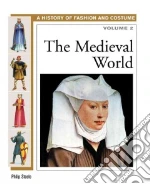 Title :
The Medieval World
Title :
The Medieval WorldAuthor: Steele Philip Publisher: Facts on File In the period between 500 and 1500 CE, dress and textiles varied greatly from one part of the world to another, from one region to another, even from one village to another. In many parts of the world, costume was regulated by law or decree. In the medieval period, fashion varied from the practical and threadbare to the rich and luxurious—with little in between. Specific coverage includes the rise of technology and trade, church and state, lords and ladies, working people, keeping warm, dressing for war, courtly fashion, freemen and merchants, palaces and popes, armor and heraldry, imperial China, and a brief look at other societies of the time. € 34,10
|
||
|
2004 |
 Title :
The World of Pirates
Title :
The World of PiratesAuthor: Steele Philip Publisher: Kingfisher Read about piracy through the ages, from the Caribbean to the South China Seas. Learn about pirate ships flags, and daily life for the crew. What exactly was pirate treasure? What happened to pirates who were caught? Who are the most famous pirates? Are there any pirates around today? It's all here—and much, much more. € 8,60
|
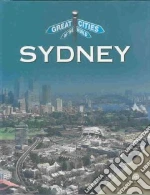 Title :
Sydney
Title :
SydneyAuthor: Steele Philip Publisher: Gareth Stevens Pub Discusses the history, geography, economy, government, culture, and future of Sydney. € 25,70
|
|
2003 |
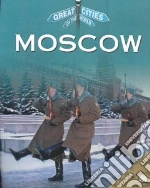 Title :
Moscow
Title :
MoscowAuthor: Steele Philip Publisher: Gareth Stevens Pub Looks at the history, culture, economy, and govenment of Moscow. € 24,60
|
|
|
2002 |
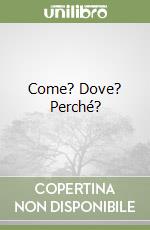 Title :
Come? Dove? Perché?
Title :
Come? Dove? Perché?Author: Avison Brigid; Steele Philip; Theodorou Rod Publisher: Vallardi Industrie Grafiche € 12,50
|
|
|
2001 |
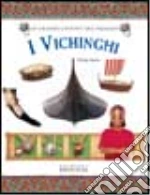 Title :
I vichinghi
Title :
I vichinghiAuthor: Steele Philip Publisher: White Star € 14,46
|
|

|

|

|